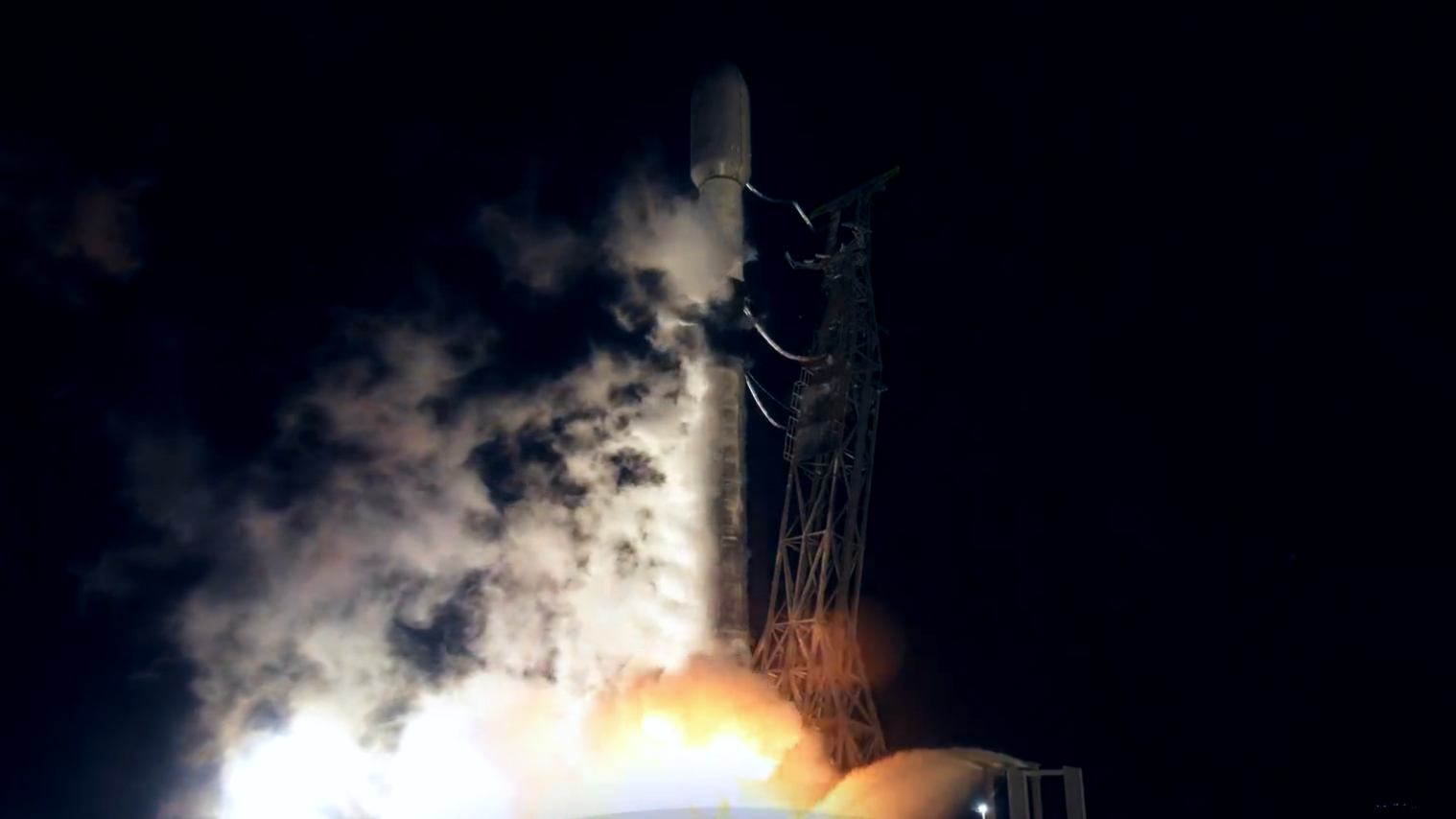A SpaceX Falcon 9 rocket launched from California early Monday morning (Sept. 25), carrying 21 Starlink satellites to orbit.
The Falcon 9 is lifted off from Vandenberg Space Force Base in California Monday at 4:48 a.m. EDT (0848 GMT; 1:48 a.m. local California time).
The launch was streamed live via SpaceX's account on X (formerly Twitter); coverage started about five minutes before liftoff.
Related: Starlink satellite train: How to see and track it in the night sky

The Falcon 9's first stage returned to Earth safely, landing on a SpaceX drone ship at sea about 8.5 minutes after launch.
It was the sixth liftoff and landing for this Falcon 9 first stage, according to a SpaceX mission description.
The 21 Starlink satellites deployed from the Falcon 9's upper stage into low Earth orbit (LEO) about 62.5 minutes after launch.
Get the Space.com Newsletter
Breaking space news, the latest updates on rocket launches, skywatching events and more!
Monday morning's launch came less than two days after a Starlink liftoff from Florida's Space Coast that marked the 17th flight for a Falcon 9 first stage. That tied the company's reuse record, which was set just last week.
Starlink is SpaceX's internet megaconstellation. The network consists of more than 4,750 operational satellites in LEO, and that number will continue to grow far into the future.
This article was corrected at 10:55 a.m. EDT Sept. 25 to reflect the correct launching location.
Join our Space Forums to keep talking space on the latest missions, night sky and more! And if you have a news tip, correction or comment, let us know at: community@space.com.

Michael Wall is a Senior Space Writer with Space.com and joined the team in 2010. He primarily covers exoplanets, spaceflight and military space, but has been known to dabble in the space art beat. His book about the search for alien life, "Out There," was published on Nov. 13, 2018. Before becoming a science writer, Michael worked as a herpetologist and wildlife biologist. He has a Ph.D. in evolutionary biology from the University of Sydney, Australia, a bachelor's degree from the University of Arizona, and a graduate certificate in science writing from the University of California, Santa Cruz. To find out what his latest project is, you can follow Michael on Twitter.









